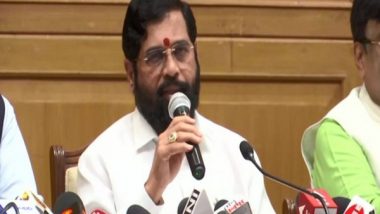Nagpur (Maharashtra) [India], March 15 (ANI): With the H3N2 influenza virus cases witnessing a spike in Maharashtra, the state government will hold a meeting on Thursday in the presence of Chief Minister Eknath Shinde and his Deputy Devendra Fadnavis.
"A meeting regarding H3N2 will be held tomorrow in the presence of Chief Minister and Deputy Chief Minister," state health minister Tanaji Sawant told the state assembly on Wednesday.
Also Read | Falling stocks in Europe and US stoke banking crisis fears.
Tanaji Sawant on Wednesday informed that 352 patients of the H3N2 virus have come so far in the state.
"352 patients of the H3N2 virus have come so far. Their treatment is going on and hospitals have been asked to be on alert. H3N2 is not fatal. It can be cured by medical treatment. No need to panic," said the minister.
Two deaths suspected of Influenza H3N2 are from Nagpur while one death is from the Ahmednagar district.
Till March 13, 2023, the total number of patients tested for influenza in Maharashtra is 2,56,424.
The total number of suspected patients has been reported as 1406.
The number of patients suffering from swine flu H1N1 is 303. The number of patients suffering from H3H2 is 58. While the number of patients admitted to the hospital is 48 so far.
Seasonal influenza is an acute respiratory tract infection caused by 4 distinct Types- Influenza A, B, C and D belonging to the Orthomyxoviridae family.
Among these types, Influenza A is the most common pathogen for human.
Globally, influenza cases are typically seen to increase during certain months of the year. India usually witnesses two peaks of seasonal influenza: one from January to March and other one in post monsoon season.
According to the Union Health Ministry, the cases arising from seasonal influenza are expected to decline from March end.
In most of the cases, the disease is self-limiting with symptoms of cough and cold, body ache and fever etc. and usually resolves within a week or so.
However, potential high risk groups such as infants, young children, pregnant women, elderly above the age of 65 years and people with comorbidities might experience more symptomatic illness requiring hospitalization also.
Disease transmission is mostly air borne from person-to-person, through large droplets generated by the act of coughing and sneezing. Other modes of transmission, including indirect contact by touching a contaminated object or surface (fomite transmission), close contact including hand shaking. (ANI)
(This is an unedited and auto-generated story from Syndicated News feed, LatestLY Staff may not have modified or edited the content body)













 Quickly
Quickly

















